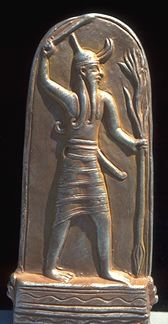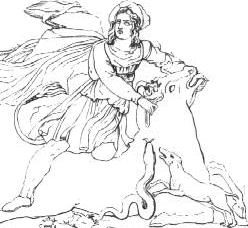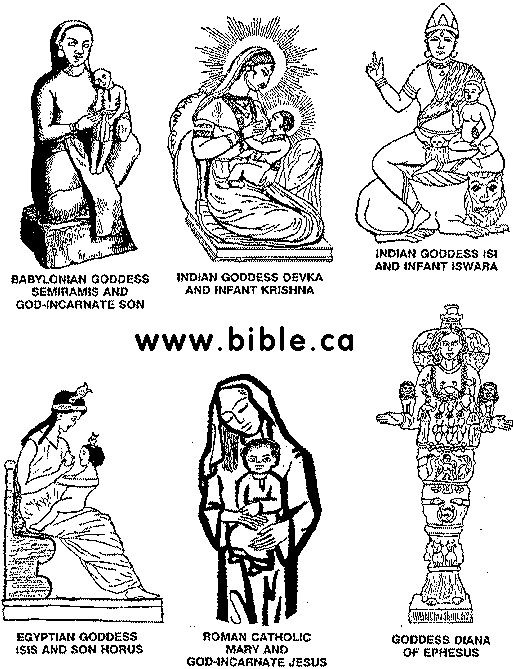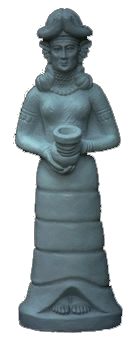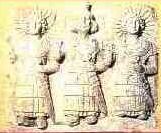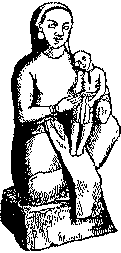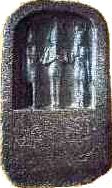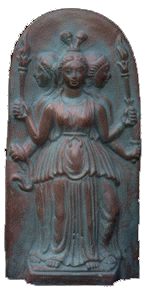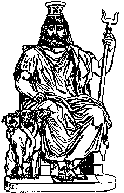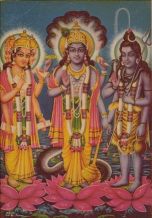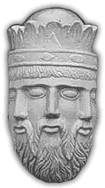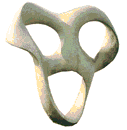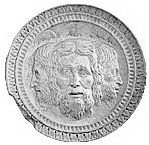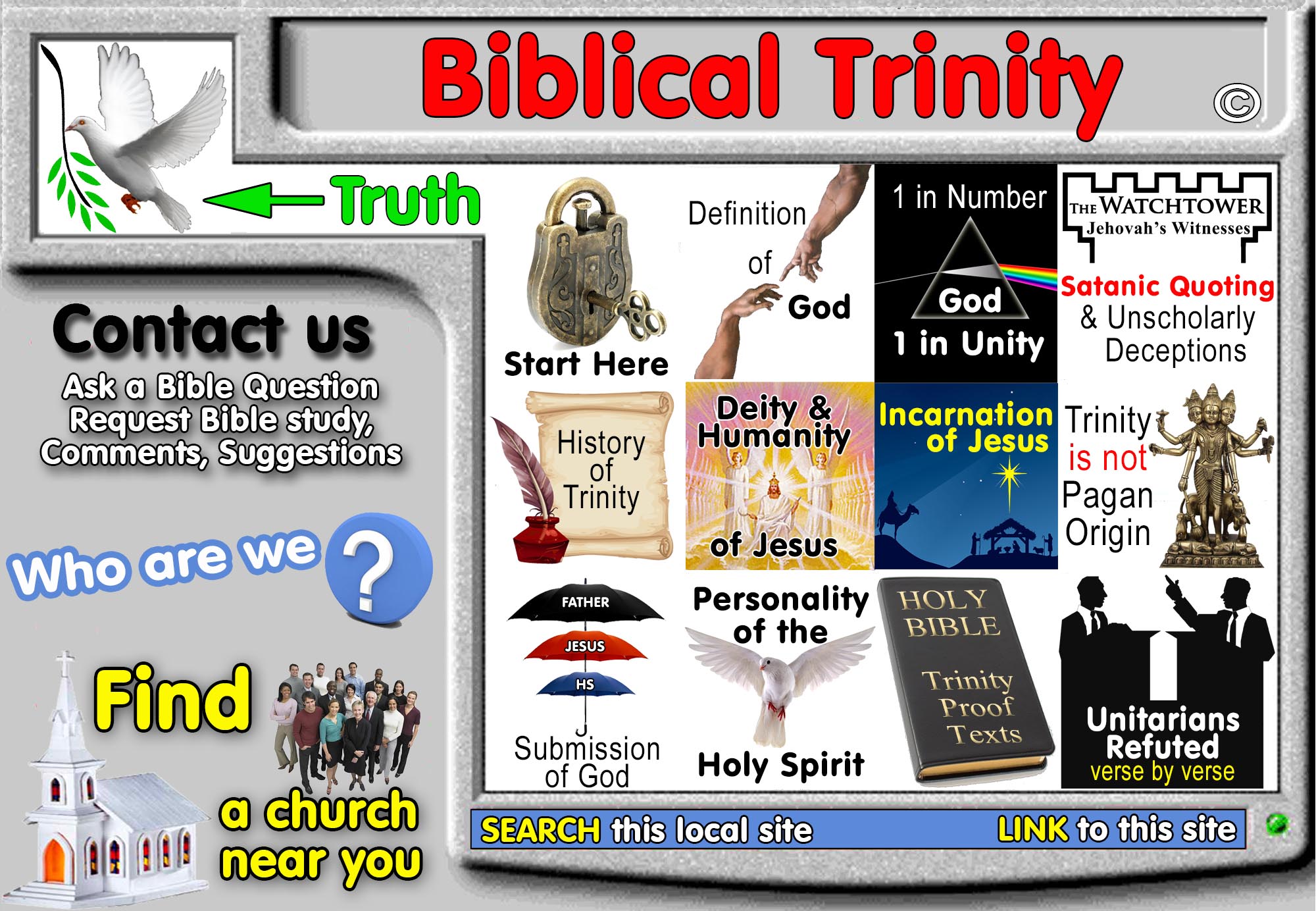|
Polytheism is Pagan.
(Polytheism) |
Christians did not borrow
Trinity from the pagans!
|
"The fact that the church fathers never defend trinity against a charge of pagan influence is significant. If the source was so obviously pagan, then there would have been a huge outcry! But as it is, in all the discussion of trinity, those who opposed it didn't compare the Christian trinity with pagan trinities."
Six reasons why Christians
didn't borrow trinity from the Pagans!
|
|
|
|
Reason Quoting themselves as their expert! |
Reason #1: Quoting themselves as their expert! Sources, authorities and "historical experts" quoted by anti-Trinitarians are invalid! In fact, they often quote themselves as their own expert! Kind of like calling yourself as a witness to your own trial! Jehovah's Witnesses, for example have thousands of publications to chose from! Many of their examples of pagan Trinitarian gods, are nothing more than picking 3 of that cultures 100 and claiming they were worshipped as a trinity. Such is deceptive and unscholarly! |
|
|
|
|
Reason Quoting Pagans, Atheists and Modernists! |
Reason #2: Quoting Pagans, Atheists and Modernists! When they aren't quoting themselves, they quote from "modernists-Trinitarians", atheists, pagans and non-Christians. We do not dispute that these sources actually say that Christians borrowed trinity doctrine from the pagans... for that is exactly what they say. (No encyclopedia we know of says Trinity doctrine is of pagan origin!) The problem is that these same sources ALSO claim that Christians borrowed most of Jesus' teachings, virgin birth, the name "Mary" for Jesus' mother, communion, Noaic Flood story, creation story from the pagans! Such selective quoting is both dishonest and unscholarly! The fact is, these authorities are flat wrong when the maintain most aspects of Christian faith originated with the Pagans! Moses did not borrow his creation and flood story from the pagans any more than Moses and Christians borrowed Trinitarian theology from the Pagans! Sabbatarians are guilty of the same thing when they quote the Catholics Authorities as proof that the Pope changed the sabbath to Sunday but reject the same Catholic authorities when they ALSO claim that Peter was the first Pope! The authorities anti-Trinitarians use to support their view that trinity is pagan origin doctrine is like quoting the devil! Selective quoting of the devil! Jehovah's Witnesses are willing to trust the devil SOME OF THE TIME! Anti-Trinitarians will quote from "Trinitarian modernists" (who deny inspiration, but believe in God as a Trinity) and say, "see even Trinitarians know their doctrine is Pagan origin!" We relply: Yes, "Modernist-Trinitarians" do believe their doctrine is of Pagan origin, but they also teach, often in the same paragraph, that all these doctrines are of pagan origin: virgin birth, Jesus moral teachings, Jesus resurrection etc. |
|
|
|
|
Reason Misquoting and misrepresenting Trinitarians |
Reason #3: Misquoting and misrepresenting Trinitarians They dishonestly misrepresent Trinitarian sources through "selective quoting" to make it appear that the source is teaching the opposite to what the source actually believes! But they actually use the quotes in two different ways. First, they will simply selectively quote Trinitarian sources without saying they are Trinitarian in order to give the impression that anti-Trinitarian doctrine is the majority orthodox view among "scholars". Second sometimes, even in the same article, will quote different Trinitarian sources and say: "see even the Trinitarians know that trinity doctrine originated with the pagans!" Now if you just stop and think for a minute, what "Bible believing Trinitarian" is going to say that a key element of his doctrine came from the Pagans? None! |
|
|
|
|
Reason Incomplete research & incompetent conclusions! |
Reason #4: Incomplete research & incompetent conclusions! Anti-trinitarians ignore the larger picture the data paints! In collecting data on ancient paganism and idolatry, there are examples of "Twinities: 2" "Trinities: 3" "Quadites: 4" and "Quintities: 5" etc. Anti-Trinitarians search through the thousands of pagan gods of history and look for any theme of three, while ignoring all the themes of 2,4,5. Of course, the cultures that worshipped these gods did not view them as "trinities", but irresponsible theologians and historians make something out of nothing! For example, Anti-Trinitarians actually argue that "Zeus, Hades and Poseidon" were a trinity god, and one of the sources where Christians borrowed trinity from. This is simply nonsense! Everyone knows they were not a trinity! (It is rank polytheism!) Anti-Trinitarians find three brothers who each got control of one of three things: sky, earth, underworld, and they call it a trinity! What about the "Quinity" god of the four winds! Or the "Twinity" god of Sun and Moon! Or the "twelve in one" god of the constellations that make up the zodiac? It is completely dishonest and deceptive to arbitrarily highlight the incidence of "trinities" and totally ignore "2 in 1" 4 in 1" "5 in 1" pagan concepts of God. Talk about self made religion! |
|
|
|
|
Reason The Devil is a counterfeiter! |
Reason #5: The Devil is a counterfeiter! Mt 13, the parable of the tares, the devil sows "wild wheat" to counterfeit the "true wheat". We are not dismissing the possibility that some cultures may have had a triune, trinity god, "3 in 1". If there is any real trinity-type of god among paganism, it should be remembered that real demons are involved in the origin of false doctrine and worship. "That a thing sacrificed to idols is anything, or that an idol is anything? No, but I say that the things which the Gentiles sacrifice, they sacrifice to demons, and not to God; and I do not want you to become sharers in demons." 1 Cor 10:19 and "1 Timothy 4:1-2 "But the Spirit explicitly says that in later times some will fall away from the faith, paying attention to deceitful spirits and doctrines of demons". So because the devil is a counterfeiter of truth, the incidence of trinity, virgin birth, the name "Mary" for Jesus' amongst pagan theology is better explained a the devil's counterfeit of the truth! |
|
|
|
|
Reason Trinity doctrine is easy to prove from scripture! |
Reason #6: Trinity doctrine is easy to prove from scripture! Trinity is one of the easiest things to prove from the Bible! No wonder anti-Trinitarians have to go to pagan and atheistic sources to prove their doctrine! We openly admit that the Roman Catholics borrowed Christmas, Easter, Halloween from Paganism. But their non-Christian origins are quite easy to trace without any dispute. Further, the complete absence of any of these in scripture is undisputed, whereas even Anti-Trinitarians openly admit that there are places where trinity doctrine APPEARS to be taught. In fact, click here to we will prove Trinity from the Bible alone beyond any question! Anti-Trinitarians are apostates and enemies of Christ! They are deceptive and unscholarly! |
|
|
|
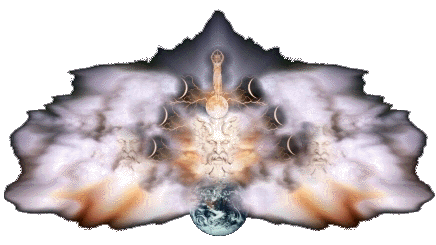
|
|
|
|
Quoting themselves as their expert! |
|
|
|
|
Examples of quoting:

|
|
|
|
Quoting Pagans, Atheists and Modernists! |
|
|
|
|
Here is a typical source used to prove Trinity is Pagan. Notice that JW's, Christadelphians and United Pentecostals only quote the first and fail to tell you all the other things THE SAME SOURCE also claimed was of pagan origin! Such selective editing is both dishonest and deceptive! We argue that NONE of the things below were borrowed from the Pagans! These references actually hurt anti-Trinitarians! For they must admit that there is clear existence of truth in some aspect of Pagan belief!
How Jehovah's Witnesses trash the trinity, but shoot themselves in the foot:
|
This quote sounds convincing: |
"The origin of the [Trinity] is entirely pagan." (The Paganism in Our Christianity, Arthur Weigall) |
|
|
Where is it found? "Should you believe the Trinity?", Watchtower publication pictured left. In fact this quote is one of the "star witnesses" quoted in the introduction, then again later the booklet! |
|
Why is it deceptive? |
Because the author is an atheist and a Bible hater who not only claims that trinity is pagan, but the whole of Christianity is pagan as well! |
|
Read this quote from the Watchtower magazine: |
"The evidence of the holy spirit in the quality and content of the writings published by the Watchtower Society should be the thing that satisfies, that convinces, together with a comparison of these things with the inspired Word of God, the Holy Scriptures." (Watchtower, Oct. 1, 1959, p. 607-608) |
|
See the whole book: |
Arthur Weigall the atheist and Christianity-hater, is used by Jw's as their star witness to prove trinity was borrowed from the pagans! This you got to see! |
How Non-Christian's try to trash the whole of Christianity:
|
Things Jews and Christians stole from Pagans: |
|
|
The Trinity |
Pre-Christian Pagans also had a trinity; it was the Triple Goddess: Maiden, Mother and Crone. It represented all stages of the life cycle. The Fates were one version of this. |
|
Jesus
Baal |
Jesus and the events of his life were copied from numerous Pagan stories. The timing, significance and manner of his death, resurrection and birth were taken from the gods Attis, Orpheus, Heracles, Mithra and Dionysus. Even his titles, such as "the Lamb of God" were taken from previous material. All of his miracles were common tricks of Pagans before his time as well. Attis was crucified 200 years before Jesus supposedly was. As this quote shows: "The Jesus story incorporated elements from the tales of other deities recorded in this widespread area, such as many of the following world saviors and "sons of God," most or all of whom predate the Christian myth, and a number of whom were crucified or executed. These include: Adad of Assyria , Adonis, Apollo, Heracles ("Hercules") and Zeus of Greece , Alcides of Thebes , Attis of Phrygia , Baal of Phoenicia , Bali of Afghanistan , Beddru of Japan , Buddha of India , Crite of Chaldea , Deva Tat of Siam , Hesus of the Druids , Horus, Osiris, and Serapis of Egypt, whose long-haired, bearded appearance was adopted for the Christ character, Indra of Tibet/India , Jao of Nepal , Krishna of India , Mikado of the Sintoos , Mithra of Persia , Odin of the Scandinavians , Prometheus of Caucasus/Greece , Quetzalcoatl of Mexico , Salivahana of Bermuda , Tammuz of Syria (who was, in a typical mythmaking move, later turned into the disciple Thomas) , Thor of the Gauls , Universal Monarch of the Sibyls, Wittoba of the Bilingonese , Xamolxis of Thrace , Zarathustra/Zoroaster of Persia , Zoar of the Bonzes."
Mithra, The god of light. Here he is slaying the divine bull. |
|
Virgin birth |
Pagan sun gods and harvest gods were traditionally born of virgins, often a virgin temple priestess |
|
the name "Mary". |
Many different ancient cultures used "Mary" or a derivative of that name is the name of their goddess who bore god. This was also the ritual name of the temple harlots of the time who would have sex with those who made offerings to the temple in exchange for a symbolic union with the goddess, whom they were said to represent, just as the priest is the direct representative of God in Christian cosmology. All temple priestesses were considered to be "virgins" despite their many sex partners because the laity were not having sex with the woman, but rather with the Goddess. The worship of Mary and the god-incarnate Jesus originated with the pagan worship of Semiramis and her god-incarnate son. Numerous Babylonian monuments depict the goddess-mother Semiramis with her son in arms. The image of the mother and child was so firmly entrenched in the pagan mind that when Christianity appeared on the scene these pagan statues and paintings were merely renamed and worshiped as the virgin Mary and her god-incarnate son Jesus. Worship of mother and child spread from Babylon to the ends of the earth, but were called different names in the languages of the various counties where their worship appeared. The ancient Germans worshipped the virgin HERTHA with the child in the arms of his mother. The Scandinavians called her DISA pictured with her child. In Egypt, the mother and her child were worshiped as ISIS with the infant OSIRIS or HORUS seated on his mother's lap. In India, the mother and child were called DEVAKI and KRISHNA, and also ISI and ISWARA as they are worshiped to this day. In Asia, they were known as CYBELE and DEOIUS; in pagan Rome, as FORTUNA and JUPITER-PUER, or the boy JUPITER; in Greece, as CERES, the great mother with babe at her breast, or as IRENE, the goddess of peace, with the boy PLUTUS in her arms. Even in Tibet, China, and Japan, Jesuit missionaries were astonished to find the Roman counterpart of MADONNA and child. SHING MOO, the holy mother in China was portrayed with a child in her arms and a glory around her. Semiramis was worshiped in Ephesus as the pagan fertility goddess DIANA who represented the generative powers of nature. She was referred to as a fertility goddess because she mothered all the numerous pagan gods representing the god-incarnate Nimrod. Diana was pictured with numerous teats so that she could nurse all the pagan gods, and she wore a tower-shaped crown symbolizing the Babylonian tower of Babel.
|
|
Lord's Supper (communion) |
Wine has been used as a symbol for divine blood in many pre-Christian cultures. For instance, worshippers of Dionysus drank it in communion, but Jews, like Jesus and his followers, were strongly opposed to such rituals. Pagans also used wine to symbolize the blood of the goddess, from which all life was nourished. Followers of Osiris ate bread used to symbolize his flesh. |
|
the "Golden Rule" |
The "Golden Rule" was ripped off, though from Buddhism rather than Paganism. It makes one wonder what would be left if all of these things were stripped away! |
|
Noaic Flood story |
In the past century, scholars have found four major early records which preserve accounts similar to the record of Genesis 1-11. The Epic of Gilgamesh, the Summerian King-List, the Semitic Old-Babylonian Epic of Atrakhasis, and the Summerian Flood Story, all were written between the twentieth and seventeenth centuries B.C. Yet they all match the outline of Genesis 1-11. GILGAMESH: Following are the main characters from Gilgamesh, an epic of the Sumerian peoples. It is believed today that this epic was written at least 1300 years before Homer wrote the Iliad. Scholars are particularly intrigued by the similarity between the flood story in Gilgamesh and the one in the Bible. This epic is the earliest major recorded work of literature, and Gilgamesh the first human hero. Gilgamesh is a tyrannical Babylonian king who ruled the city of Uruk. In the story, the gods respond to the prayers of the citizens of Uruk and send a wild, brutish man, Enkidu, to challenge Gilgamesh to a wrestling match. When the match ends with neither a winner, they become close friends. They journey together and share many adventures. Accounts of their heroism and bravery in slaying dangerous beasts spread to many lands. When the two travelers return to Uruk, Ishtar (guardian deity of the city) proclaims her love for the heroic Gilgamesh. When he rejects her, she sends the Bull of Heaven to destroy the city. Gilgamesh and Enkidu kill the bull, and, as punishment for his participation, the gods doom Enkidu to die. After Enkidu's death, Gilgamesh seeks out the wise man Utnapishtim to learn the secret of immortality. He tells Gilgamesh a story of a great flood. Utnapishtim reveals to Gilgamesh that a plant bestowing eternal youth is in the sea left behind. Gilgamesh dives into the water and finds the plant but later loses it to a serpent and, depressed, returns to Uruk to end his days. |
|
Genesis creation story |
One hundred years ago it was fashionable for theologians in higher-critical circles to insist that Genesis plagiarized these other Mesopotamian sources. Since then, it has become evident that they all independently record what they believed was a genuine event in ancient (to them as well as to us today) history (K. A. Kitchen, The Bible in Its World, pp. 26-32) |
|
1st day of the week (Sunday) worship |
Sabbath keepers claim that Christians borrowed "Sunday worship" from the pagans who worshipped the "Sun". Such is just as false as Arians claiming Trinity was borrowed from the Pagans. |

|
|
|
|
Reason # |
Misquoting and misrepresenting Trinitarians |
|
|
|
Here are a few examples of how Jehovah's Witnesses Misquote Trinitarians :
|
|
The "Decepto-meter" has gauged all these quotes as: "Satanic Quoting practices" |
|
Source: "Should you believe the Trinity?" |
|
Examples of Satanic quoting of Trinitarians by Watchtower:
|
Who was quoted |
Our comment |
|
Lohse, Bernard in "A Short History of Christian Doctrine" |
First the Watchtower leaves the reader with the false impression that Lohse believes that trinity originated with the pagans and has no scriptural basis. Second, the Watchtower, through a series of deceptive quotes, irresponsibly portrays Constantine as a faithless sun-god pagan idol worshipper with no understanding of Christianity who single-handedly introduces trinity to Christianity from the pagans and is almost the author of the Nicene creed. |
|
Kelly, J.N.D. in "Early Christian Doctrines" |
JW's Quote Kelly in such a way as to leave the impression that he is not a trinitarian or one with no Bible basis. |
|
Kittel, Gerhard in "Theological Dictionary of the New Testament" |
JW's Quote Kittel in such a way as to leave the impression that he is not a trinitarian or one with no Bible basis. |
|
McClintock and Strong in "Cyclopedia of Biblical, Theological, and Ecclesiastical Literature" |
The watchtower quotes in such a highly selective way, that the reader is left with the opposite impression of the source. |
|
Thayer, Joseph H. in "Greek-English Lexicon" |
The quote is from a handwritten note in a book that was supposed to be Thayer's personal copy in his library, but contradicts what Thayer actually published. |
|
SHOW ME MORE!!! |
Encyclopaedia of Jehovah's Witnesses satanic quoting practices |

|
|
|
|
Reason # |
Incomplete
research & incompetent conclusions! |
|
|
|
Paganism did indeed believe in triadic deities, these were always three separate god's who were often the three most eminent god's at the top of a pantheon of other lesser god's (as in Polytheism).
"The Ontological Doctrine: There is no reason to seek for sources or types of the doctrine of the Trinity outside of Christianity or of the Bible, though in the eighteenth century efforts were made to derive the Christian dogma from Plato, and later from Brahmanism and Parseeism, or, later still, from a Babylonian triad. Even were the resemblance between the Christian Trinity and the pagan triads far greater than it is, there could be no serious question of borrowing. The development, of the Christian doctrine of the Trinity is historically clear, and its motives are equally well known, being almost exclusively due to Christological speculation." (New Schaff-Herzog Encyclopedia, Trinity, Doctrine of the; p18)
False claims of Trinity:
It is claimed that these four cultures had trinity Gods. Such is without any documentation, but continuously restated as fact. We don't deny these God's were part of the culture, we simply reject there was any trinity-type connection between them.
"The Hindus, Greeks, and Romans had a three-god triad, but those did not come close to the Christian doctrine of the Trinity. Those cultures and religions had a three-god concept, but the members of their divine triads were not co-equal and co-eternal. Neither did they share the same nature and essence. They also did not have a perfect unity among them. In fact, the opposite was true. These religions may be called tritheistic, or, more accurately, polytheistic, but not Trinitarian. They did not have one God of three persons, nor even three gods. Rather they had scores of gods of different strengths in constant conflict." (J. L. Williams, Victor Paul Wierwille and The Way International, p. 78)
Here are some of the claims:
Anti-trinitarians are actually wanting to project the entirely false and deceptive view that there is little difference between the Christian trinity view of God and the Hindu polytheistic view of God. Further, Arians (Jw's) know that Hindus would actually read the watchtower magazine and immediately label Jw's themselves as polytheists!
"Classical and modem Hinduism. Certain gods of no great importance in the Vedic tradition came to dominate classical Hinduism, above all Siva and Visnu. The latter was associated with belief in avatara, or incarnation. Most male gods in the Hindu pantheon also came to be represented with a female consort, symbolizing the hakti, or creative power of the deity. The increasing elaboration of Hindu cults as different groups were absorbed into a systematized social fabric has led to the estimate of as many as 33,000,000 Hindu gods. It has been common practice for devotees to select the form under which the divine is worshipped, and such a deity is called the isladevati. Most Hindus are inclined to interpret the many gods as being symbols of the one divine reality." (Encyclopedia Britannica, vol 14, Polytheism, p787)
|
Actual claims of historical "trinities" in pagan cultures |
Reason claim is false |
|
|
"Unity in plurality; Egyptian trinities: examine the various possible ways of formulating the proposition of unity in plurality. First of all there is the kind of association of gods that we have already encountered: first a pair, and then a trinity. The best known example of this is the union of Ptah, Sokaris and Osiris. Sokaris, who was a local god at Memphis, was associated with Ptah, who was powerful there but whose influence was also nationwide; through his function as god of the dead, he was associated with Osiris, who was supreme in such matters. There is ample evidence that this trinity was regarded as a unity. For instance, the association Ptah- Sokaris- Osiris is found in mortuary formulae. Or we read in numerous cases: ( may he offer (di.f) [the gifts, etc.]' - i.e., the trinity is rendered a unity by the singular pronoun. Sometimes the plural is used instead: e.g., 'that they may give (di. sn)'; but this is not so much proof of inconsistency as a reflection of the dialectic inherent in a problem which was, to to speak, open-ended.zi It seems highly characteristic of the impact made by Egyptian theology that Syrian goddesses, who in their homeland (according to the information that survives) were never associated in this way, were in Egypt combined to form a trinity: Kadesh-Astarte-Anath. Other unions of gods were more complex than such simple combinations of names, which only yield a modest amount of information through an analysis of grammatical usage. In the theology of Apis, the god of Memphis, incarnate as a (whole) bull, there are two statements which serve to enhance the nature of this relatively humble god by making two great deities take up their abode in him; these statements shows clearly that the three gods are one. The earlier one dates from the Ramesside period. It represents the bull as a mortal who has become Osiris, and runs as follows: 'Osiris = Apis [a single quantity] - Atum - Horus at the same time (n sp), the Great God.' The more recent one is to be found as an invocation of an oracle in the so-called Demotic Chronicle. It runs: 'Apis, Apis, Apis! That is (dd) Ptah, Pre, Horsiese ... Apis is (piy; i.e., the copula) Ptah, Apis is Pre, Apis is Horsiese.' The texts speak for themselves; by various linguistic devices they formulate the unity of the three gods in Apis. His power is greatly enhanced by being associated either with the Heliopolitan primordial god Atum and the god-king Horus or with his mighty neighbour Ptah, the sun-god Re and a manifestation of Horus. Thus there are two possibilities: in the first case two gods are combined with Apis; in the second case he incorporates three gods. The purpose of these trinities is, as we saw at the beginning of our analysis, to enhance the nature and increase the power of a low- or medium-ranking deity. This was the first step along a path of spiritual development that was fraught with tremendous consequences. By contrast, other trinities lead one directly to the problem of unity in plurality by making three stand for plurality as such. This appears to be the case in that important theological statement in the Leyden hymns to Amon which runs: 'All gods are three: Amon, Re and Ptah, and there is no second to them. "Hidden" (imn) is his name as Amon, he is Re in face, and his body is Ptah.' Already at the beginning of this century the editor of this text realized that this was a 'trinity as a unity" and the tension between singular and plural brings out the inherent dialectic: three gods, no second to them, but hidden is his name, he is Re, etc. How the three gods mentioned here represent the pantheon will be immediately evident to the Egyptologist. For the hymns, which were written down and probably also composed during the early Ramesside period, have chosen in Amon, Re and Ptah the three gods whose real power (possession of temples, etc.) sur-passed that of all other gods, with Amon far in the lead . It is also worth noting that the theology in question by no means occupied a vacuum. For Re and Ptah had daughter sanctuaries in the complex of Karnak, Amon's main temple, so that the three great gods were worshipped next door to one another. Moreover, we have already heard that texts addressed to Amon could be put up in the Ptah temple at Karnak. Finally, the trinity as a unity of Amon, Re and Ptah, like that of Ptah, Re and Horsiese, can be embodied in a fourth god, Apis. In the Ptolemaic Opet temple at Karnak Thoth is praised as 'the twofold Great One, Lord of Hermopolis'; he is called 'the heart of Re, the tongue of the Ta-tenen [ = Ptah], the throat of the one with the hidden name [Amon]'. This shows that this trinity was still important in a very late period; we shall take up this point again in chapter i i, when dealing with the impact of such Egyptian theological doc-trines. One other point deserves to be emphasized. In conformity with the principles governing the association of Egyptian gods, the Amon-Re-Ptah trinity did not put an end to the independent existence of the three gods concerned. This is absolutely clear from the continuation of the Leyden hymn, which lists the locali-ties where the gods concerned were first worshipped and brings out what was peculiar to each of them (IV, 22): 'Their [the three gods'] cities are on earth, abiding forever: Thebes, Heliopolis, and Memphis unto eternity.' If one makes use of Christian theological terminology to categorize Egyptian doctrines, the Ley-den trinity would have to be called tritheistic, not modalistic. To indicate the whole range of opportunities open to the Egyptian theologians in the matter of trinities alone, we can do no better, by way of contrast to the foregoing, than to draw attention to a unity in trinity which is definitely modalistic. This is to be found in the notion of one sun becoming visible in three aspects (modalities). These modalities are the three phases of the sun in the morning, at noon and in the evening. Already in the Pyramid Texts these were identified, by characteristic plays on words, as Khepri (one who rises), Re and Atum (one who sets).31 During the Ramesside period, however, they are expressly referred to as the unity which they in fact are: three manifestations of one sun. The sun-god is made to say: 'I am Khepri in the morning, Re at noon, Atum in the evening.' This modalistic trinity, in which the one 'F appears three times, is in our opinion reflected in a spell in the Book of the Dead, where the sun is addressed as 'the aspect of the three (b; n hmt)'. This is in accord with the common notion that Re was 'a child in the morning, a youth at noon and Atum [as an old man] in the evening', which once again shows clearly that this is in fact the extreme borderline case of primary and intrinsic unity. These extremes of tritheism and modalism do not exhaust the wealth of Egyptian trinities. In the Leyden hymns we saw the problem of plurality and unity represented by three gods and one. A trinity can also come about by suspending, as it were, the pro-cess whereby the gods were created out of the primordial god at the decisive initial moment, and so formulating a 'trinity of becoming', comprising the primordial One and the first pair of gods to be begotten. In one theological text this reasoning is applied to the god Shu, who according to Heliopolitan teaching was begotten parthenogenetically, together with his partner Tef-nut, by the primordial god Atum.. This text survived in the spells of the Coffin Texts, where it is transposed to the dead man who equates himself with Shu. It runs as follows: 'I am "life", the lord of years, alive until infinity, a lord of eternity, [I am he] whom Atum, the eldest, has brought forth through his might (;hw) [at the time] when be brought forth Shu and Tefnut at Heliopolis, when he was One [and] when he became Three" This formulation, with its contra-puntal rhythm of being and becoming, one and three, makes it clear to anyone familiar with such ways of thinking that the original unity is thought of as continuing to exist after the act of creation. He, the one Atum, performed the act of creation; he is still deemed to be singular after he became three, i.e. after he had begotten Shu and Tefnut; thereafter further evolution could take place by natural procreation. It could be held that in the Leyden text we have a static and simultaneous type of plurality, whereas the one in the Coffin Texts is dynamic, called into being by the triad. The development of many out of one can of course also be expressed differently. Thus in a coffin inscription from the Bubastite period one mortal, again magically identifying himself with the gods, says: 'I am one [Atum] who became two. I am two [Shu and Tefnut] who became four. I am four who became eight.'36 The eight referred to here, which together with the primordial One form the Heliopolitan Ennead, may be regarded as a concept of totality, i.e. a symbol of plurality. But what is lacking is the characteristic link between unity and plurality; we can indeed see plurality developing, but the basic harmony that characterizes unity, which makes the trinities what they are, is not sustained. This is not so true of that extreme borderline case in which Amon, the primordial god, is said to be 'the only One who made himself into millions. For in this case the unity of the primordial god is nevertheless preserved by the fact that the hymnist praises the one God even though he has developed to the point of infinite multiplicity. (Egyptian Religion, Siegfried Morenz, p442-446, quoted in, Should you believe the Trinity?, Watchtower publication) |
|
Phoenicians: Ulomus, Ulosurus, Eliun |
|
|
Irish: Krissan, Biosena, Jiva |
|
|
Scandinavians: Thor, Woden, Fricco
|
|
|
Armenians adopted the Iranian form 5th century BC: Vahakn, [the Armenian sun god] the god of fire, power and bravery. These three divinities constituted the "trinity". |
|
|
The so-called Chaldean oracle says: "the unity brought forth the duality which dwells with it and shines in intellectual light: from these proceeded the trinity which shines in all the world." The names of the chaldean trinity are: anos, illinos, aos |
|
|
The emperor of China offers once each year a sacrifice to the spirit of trinity and unity. Lao-tse (600 b.c.) Says: "tao is by nature one; the first begat the second; both together brought forth the third; these three made all things." |
|
|
Sumerians, Mesopotamian: The creative Gods of Sumerians: Enlil, Anu and Enki 4000BC Anu The Sky God, Lord of Heaven, first born of
Nammu the Great Mother. "The universe was divided into three regions each of which became the domain of a god. Anu's share was the sky. The earth was given to Enlil. Ea became the ruler of the waters. Together they constituted the triad of the Great Gods." Larousse Encyclopedia of Mythology |
"After Anu, Enlil, Enki, and Ninhursag had fashioned the black-headed people, Vegetation sprang from the earth, Animals, four-legged creatures of the plain, Were brought artfully into existence..." The translation above is based on the translation by Poebel in ANET. The text was found in Nippur, dated 2300 BC. Another false rumour without any evidence many overzealous unscholarly anti-trinitarians spread when they try to take this alleged text and extract a trinity! |

|
|
|
|
Reason # |
The Devil is a counterfeiter! |
|
|
|
We do not deny that some cultures may have had a "Trinitarian-like" concept of God!
It may well be also that the shades of trinities in pagan religions were not
pagan creations which the Christian church wrongly adopted. Perhaps, instead,
pagan religions adopted this from
Instead of arguing that Christians borrowed trinity from the pagans, it is more
reasonable that pagans got their plural God ideas from the Jews! Remember that
the word for God is Elohim (plural) and that in the Genesis chapters 1-10
alone, God is referred to as "US" (plural) in 3 places!
"That Christianity was so regarded [as just another mystery cult] is perfectly clear from the pains Justin Martyr takes to prove that these resemblances between Christianity and the other religions were all due to the malignity of the demons. These wretched demons had read the Scriptures and had realized, although imperfectly, what was destined to be. They trembled as they saw their coming overthrow and realized their helplessness to prevent it. To salvage as much as possible and to delude men they hastily concocted rites and ceremonies as near as possible to those they foresaw were to be instituted. Thus they hoped that when Christ appeared and instituted his worship men might be deluded into believing that the Christians were borrowing from older pagan ceremonies and beliefs. To the modern student this explanation of Justin may seem most naive; none the less, it is highly important as incontrovertible evidence of the growing likeness of Christianity to the other cults which made such an explanation essential." (Morton Scott Enslin, Christian Beginnings, Part 12, p 191)
|
Babylonian |
The Babylonian triad of Ishtar, Sin, and Shamash. 2000 BC? Ishtar is the most prominent of female deities in the Assyro-Babylonian pantheon, absorbing the place of all others. Her place as queen of heaven goes back to remote antiquity. She is Venus and appears as Ashtarte (or Easter in the Anglo-Saxon), Nana and Anunitu. She is goddess of fertility and worshipped everywhere. She is daughter of Sin and also of Anu. She is also associated with Sirius. She is goddess of sex and appropriates the attributes of Ninlil and Damkina and as daughter of Sin and from her descent to Hades she is represented by temple prostitution. The lion, normally the symbol of Shamash is associated with her as is the dove. In this sequence, she becomes then associated with Tammuz or Dumuzi as the bringer of new life in the spring cults. Ishtar (or Ninni, or Innina) among the Babylonians was the daughter of Sin the moon-god. She usurped the position of Antu as the wife or concubine of Anu. She was the goddess of love but in one of her forms her lovers suffered pain and death. Also a goddess of battle, she was Anunitu and goddess of Akkad. She was also held to be the wife of the god Ashur war-god of the Assyrians . She unites both triads from her concubinage with Anu. (Budge, Babylonian Life and History, Religious Tract Society, London, 1925, Watchtower/Jw splinter group-self quoting.) |
Alleged trinity of Ishtar, Sin, and Shamash
Ishtar |
|
Palmyra |
The Palmyra triad of moon god, Lord of the Heavens, and sun god. |
|
|
Nimrod and Semiramis Gen 10:8-12 |
Read this outrageous narrative written by an Anti-Trinitarian as to the birth of Trinitarianism: It all started with Nimrod! (Gen 10:8-12) Semiramis decided that since her husband (Nimrod) was considered a god in life, she would make him eternally a god. To the paganism Nimrod encouraged, and to his deification, Semiramis added yet another new concept in: the Trinity--a triune god. Semiramis became pregnant, but since Nimrod had died long before her pregnancy, people wondered how this pregnancy came about. Semiramis explained that she was impregnated by the Holy Spirit, which resided in her womb. When the child was born, she said he was the divine incarnation of his father Nimrod, and she named him Bar-Nin, meaning "son of Nimrod" (The word Nimrod comes from "Nimr," which means "leopard," and "rod," which means "to subdue"). Because of the diverse languages, Nimrod and Bar-Nin were called by different names from place to place. For instance, in Egypt, Bar-Nin was called Horus, the divine son in whom Osiris (Nimrod) incarnated after he was dismembered and the pieces of his body were dispersed among the nations. The divine mother who gave birth to this divine son was Isis, the Egyptian name for Semiramis. Thus there were now three gods to whom worship was due--a father god, a son god, and a holy mother goddess--yet all of these were to be considered equal, because they were all to be considered equal parts of a triune god. Semiramis replaced the emperor ship of Nimrod with this new trinitarian religion. She indoctrinated her "divine son" into this religion, teaching him the Babylonian mystery of the three gods in one, and she set him up as the first high priest or Pontifex Maximus of trinitarianism. due to the diverse languages of the peoples, the three figures of this trinity became known by different names in different places around the world. For instance, in Egypt Nimrod was known as Osiris, Semiramis was called Isis and the son was called Horus. The Greeks and Romans had different gods that represented different attributes and characteristics of these three figures. The powerful Nimrod was Zeus, the drunk Nimrod was Bacchus; the wise Semiramis was Athena; the son born of the god Zeus and the human Diana was the man-god Apollo, etc. The people of Nimrod's decaying empire turned to this religion in place of Nimrod. The Trinity became an international pagan religion that spread throughout the world, and it eventually took over the Revelations of the true Divine religions as they appeared--Judaism, Hinduism, Zoroastrianism, Buddhism... and Christianity. Thus from Semiramis came a whole new type of paganism. Some of this religion retained worshipping the sun, moon and stars as god, but most importantly, it produced the triune god with Nimrod being god, Nimrod becoming incarnate in the son through the Holy Spirit, and Semiramis being the first madonna. Thus this trinitarian religion was born into the world. Sounds like something from a cheap tabloid! Now read what Gen 10:8-12 says about Nimrod and you will learn that 99% of the above is fabrication of a wishful Arian imagination! |
"Nimrod becoming incarnate in the son through the Holy Spirit, and Semiramis being the first madonna. Thus this trinitarian religion was born into the world." |
|
Egyptian |
Triad of Amon-Ra, Ramses II, and Mut. 2000BC |
|
|
|
A hymn to Amun written in the 14th century BC distinguishes the Egyptian trinity: "All Gods are three: Amun, Re, Ptah: they have no equal. His name is hidden as Amun, he is Re before [men], and his body is Ptah." (Hornung, 219) |
|
|
Egyptian
Osiris |
The Egyptian triad of Horus, Osiris, and Isis.
Isis |
Alleged trinity of Egypt? |
|
Greek |
Hecate of the three faces Originally a Thracian moon goddess, she was absorbed as a Titan by the Greeks. Her parents are also listed as Pheraea and Zeus or Nyx and Tartarus. Hecate the daughter of Perses and Asteria and honored by Zeus as a goddess. She is the mother of Scylla and is specifically a goddess of pathways and crossroads traveled by night. Artistic representations show Her carrying torches. Where path met, a triple figure of Hecate (a trinity with Diana and Lucina) rose from masks placed at the junctions. |
Alleged Hecate trinity? |
|
Greek |
The three brothers, Zeus, Hades and Poseidon, divided creation into thirds after the overthrow of Kronos. In Greek mythology, Zeus was the god of the sky and ruler of the Olympian gods. Zeus corresponds to the Roman god Jupiter. Hades was one of the Olympian gods. He was the son of the Titans, Cronus and Rhea, and the brother of Zeus and Poseidon. When he and his brothers drew lots to divide the world after they had deposed of their father, Cronus, Zeus won command of the heavens, Poseidon of the sea, and Hades of the underworld. The Romans identified Poseidon with their god of the sea, Neptune. This is not a trinity but a rank polytheism! The co-incidence of three brothers has more to do with three regions (sky, earth, underworld) than a trinity! What about the "Quinity" of Gods for the four winds! Or the "Twinity" of gods of Sun and Moon! |
Zeus
Poseidon
Hades |
|
Egyptian |
TefnutThe gods Temu, Shu and Tefnut formed a trinity and in the story of the creation, after describing how Shu and Tefnut proceeded from himself, Temu says, "Thus from being one god I became three." As a power of nature, Tefnut typified moisture or some aspect of the sun's heat. Her brother, Shu, was the right eye of Temu and she was the left, i.e. Shu represented an aspect of the Sun, and Tefnut the Moon. |
|
|
|
In Japan, the Buddhists worship their great divinity, Buddha, with three heads, in the very same form, under the name of "San Pao Fuh." |
|
|
Hindu, India |
Brahma, Vishnu, Shiva Shiva-Rudra (beneficent and destructive) Vishnu (the omnipresent) Brahma (the creator) Siva is one of the gods of the Trinity. He is said to be the god of destruction. The other two gods are Brahma, the god of creation and Vishnu, the god of maintenance. ... To indicate that these three processes are one and the same the three gods are combined in one form. ... Brahma, Vishnu, and Siva, who are represented and worshipped as three persons, although the original divine principle Brahm is but one. In a commentary on the rig veda it is said: "there are three deities, but there is only one godhead, the great soul." A text from one of the Hindu bibles, (the Puranas) will evince the antiquity and prevalence of this belief in a nation of one hundred and fifty millions of people more than two thousand years ago. "O you three Lords!" ejaculated Attention, "know that I recognize only one God. Inform me, therefore, which of you is the true divinity that I may address to him alone my vows and adorations. The three Gods, Brahma, Vishnu, and Siva, becoming manifest to him, replied, "Learn, O devotee, that there is no real distinction between us. What to you appears such is only by semblance. The single being appears under three forms by the acts of creation, preservation and destruction, but he is one." The oldest and probably the original form of the Trinity is that found in the Brahmin and Hindu systems -- the terms of which are -- 1. Brahma, the Father or supreme God. 2. Vishnu, the incarnate Word and Creator. 3. Siva, the Spirit of God, i.e., the Holy Spirit or Ghost -- each answering to corresponding terms of the Christian Trinity, and yet two thousand years older. In India, the supreme divinity, in like manner, in one of the most ancient cave-temples, is represented with three heads on one body, under the name of "Eko Deva Trimurtti," "One God, three forms." * * Col. KENNEDY'S Hindoo Mythology. Col. Kennedy objects to the application of the name "Eko Deva" to the triform image in the cave-temple at Elephanta, on the ground that that name belongs only to the supreme Brahm. But in so doing he is entirely inconsistent, for he admits that Brahma, the first person in that triform image, is identified with the supreme Brahm; and further, that a curse is pronounced upon all who distinguish between Brahma, Vishnu, and Seva, the three divinities represented by that image. Two babylons, |
Brahma, Vishnu, Shiva
Bramha, one member of the triad Hundu God is actually a 5 headed God within a 3 headed trinity! This proves that the Hindu trinity is very different from Christian trinity. |
|
Norwegian |
17th century depiction of Trinity in the Bible |
|
|
French |
14th century |
|
|
Germany |
19th century |
|
|
Germany |
20th century |
|
|
Italy |
15 century AD |
|
|
Wiccans (witchcraft) |
Wiccans have dual Trinities of Youth, Father and Sage & Maiden, Mother and Crone. Again broadly speaking, the God is seen as "The Horned Father- Lord of the Forest" and the Goddess as "The Powerful Lady Mother" - each of whom could appear in many, many guises depending on the personal needs of the individual invoking them. |
|
|
Plato |
It is thought, Plato lived from 428 to 347 before Christ. While he did not teach the Trinity in its present form, his philosophies paved the way for it. Later, philosophical movements that included triadic beliefs sprang up, and these were influenced by Plato's ideas of God and nature. (Watchtower Statement) |
|
|
Masonic |
Masonic Trinitarian God: Jahbulon is the is a compound word and its combinations form the word Jah-Bul-On. This secret shocking fact is revealed to 23rd Arch Masons. JAH = Jahweh, the God of the Hebrews Ps
68:4 |
|

|
|
|
|
Reason # |
Trinity doctrine is easy to prove from scripture! |
|
|
|

